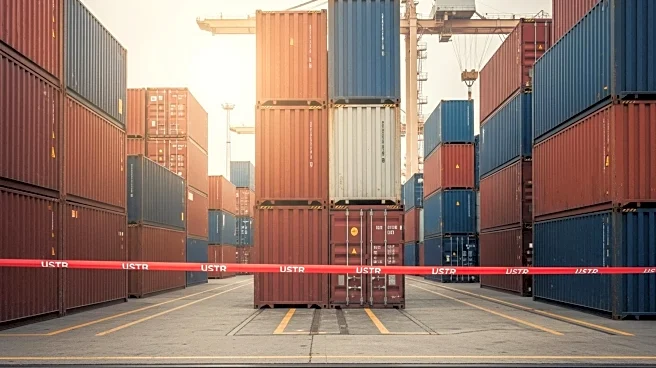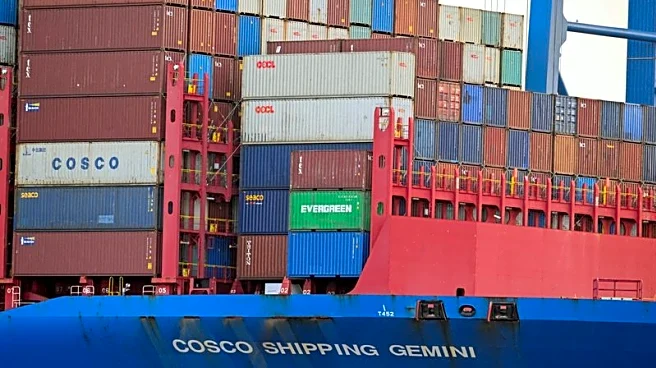What is the story about?
What's Happening?
The U.S. is preparing to implement new port fees on ships with Chinese links, potentially costing major carriers $3.2 billion annually. The fees, part of President Trump's strategy to counter China's maritime influence, will apply to ships built, owned, or operated by Chinese entities. The fees are intended to support U.S. shipbuilding and are backed by bipartisan congressional support. The U.S. Trade Representative has clarified that ship operators are responsible for determining fee applicability. The fees have prompted industry pushback, leading to some exemptions and timeline extensions for certain vessels.
Why It's Important?
The imposition of these fees represents a significant shift in U.S. maritime policy, with potential repercussions for global shipping and trade relations. The financial burden on carriers, particularly those with Chinese-built ships, could lead to increased shipping costs and impact global supply chains. The move also reflects broader geopolitical tensions between the U.S. and China, with potential retaliatory measures from China. The policy could influence fleet deployment strategies and encourage shifts in shipbuilding and ownership patterns.
What's Next?
As the October 14 deadline approaches, the shipping industry is closely monitoring potential extensions or modifications to the fee structure. The upcoming meeting between President Trump and Chinese President Xi Jinping at the APEC summit may also influence the policy's future. Industry stakeholders are likely to continue lobbying for adjustments to mitigate the financial impact and ensure compliance with the new regulations.
AI Generated Content
Do you find this article useful?














